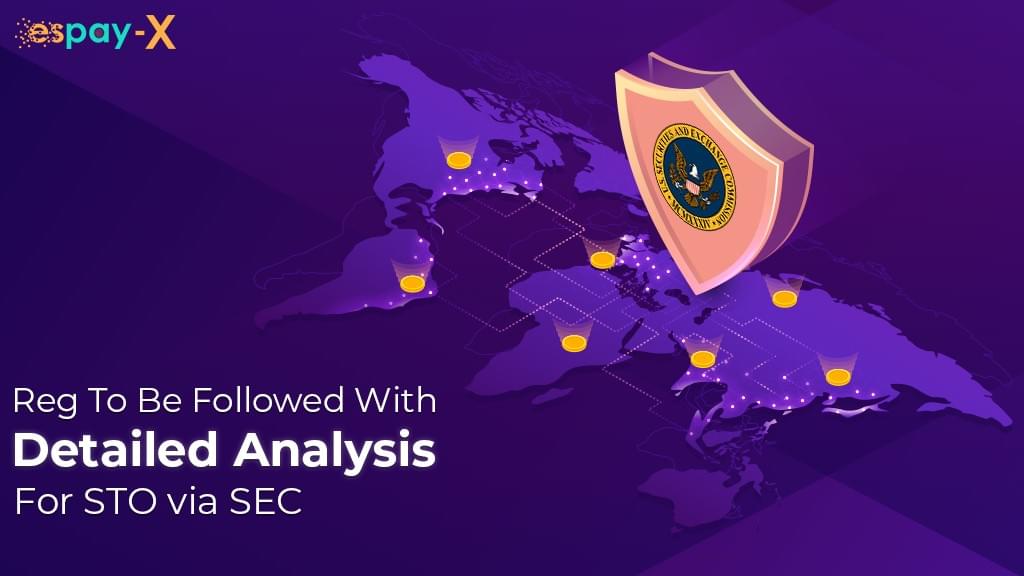
Unlike all ICOs, Security Token Offerings should be registered with the Securities and Exchange Commission (SEC). If you are planning to invest in an STO, you will get some rights to the firm or organization that issued the token just like shareholders. So, this makes them similar to shares.
The registration process included in the SEC is part of what makes STOs a safer option for shareholders or issuers. Since investors also get more security, fraudulent companies are warded off. That is why many companies are likely to hire the most trusted STO platform that provides technical as well as a legal support structure for securities issuance, including KYC, AML compliances, setting up of tokens and development services. The registration process of STOs is quite similar to the registration procedure of IPOs (Initial Public Offerings).
SEC has foreseen and made a number of legal acts to regulate several kinds of securities and their offerings or sales. They are known as regulations or rules. They facilitate you to manage offers of securities on different conditions, which currently covers an extensive range of possible requirements and differ in conditions.
These regulations include Reg A+, RegCF, Reg D, and Reg S. STOs are counted amongst those regulated token offerings that are registered with the SEC (Securities and Exchange Commission) or use many available securities exemption like Reg A+ to do it.
Such regulations are explained in the following section. Let’s get started.
Regulation CF
Regulation CF is created for holding crowdfunding campaigns that is why it is also known as Regulation Crowdfunding. It enables eligible organizations to sell or offer securities via crowdfunding. According to the rules of Regulation CF, all transactions are required under regulation crowdfunding to take place online via an SEC-registered intermediary, either a funding portal or a broker-dealer portal.
- Under this regulation, any company or firm can raise a maximum aggregate amount of $1, 07,000 via crowdfunding offerings in 12 months duration.
- An issuer also should not aggregate amounts being sold in other non-crowdfunding offerings during the preceding period of 12 months for the purpose of determining the amount sold in a specific Regulation Crowdfunding offering.
- The amount that a company or an individual can invest is limited.
- If the annual income or net worth of an investor is less than $107,000, then the limit for investment is greater of $2,200 or 5% of the lesser of annual income or net worth of the investor.
- During the time duration of 12 months, the aggregate amount of securities that are being sold to an investor via all Regulation CF offerings may not exceed the amount of $107, 000, regardless of the net worth or annual salary of the investors.
- If their annual salary as well as net worth both are equal or more than $107,000, then investment limit would be 10% of the lesser of their annual salary or net worth.
- Companies that are registered with the USA can only apply for getting started with STO via Regulation CF. Investors should also be the citizens of the US. Companies that are Exchange Act Reporting Companies are not eligible to use the Regulation CF offerings.
Any issue who is conducting a Regulation CF offering should fill its offering statement on Form C online via the Commission’s EDGAR system, and any intermediary allowing CF offering. The cover page of this form will be created when an issuer provides details in XML-based fillable text boxes on the EDGAR (Electronic Data Gathering, Analysis, and Retrieval) system. The disclosures that are requesting the text boxes can be filled as attachments to Form C. This form also does not need any specific presentation format for the attachments. Nonetheless, Form C includes an optional Q/A format for issuers’ usage to provide the disclosures that are required but not included in the XML textbox section.
Form C also consists of many other variants. All of them are discussed in the following section:
- Form C – contains the original offering statement
- Form C/A – covers amendments to a previously filled Form C
- Form C-AR – filled by issuers for providing required annual reports
- Form C-U – filled by issuers at the end of the CF offering to disclose the total amount of securities that are being sold
- Form C-AR/A – used for amendments to form C-AR that is previously filled
- Form C-TR – used for issuers who are likely to terminate their reporting
- An intermediary person in a transaction including the sales of securities for someone else should register with the SEC as a funding portal or broker. Regulation CF generates simplified registration steps for funding portals. However, non-US funding portals are not allowed to register themselves in the SEC.
- An intermediary should also register with a self-regulatory organization or SRO.